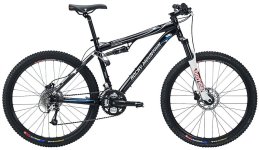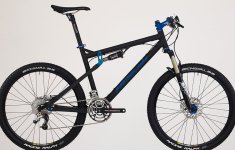macribs
10 MW
- Joined
- Jul 22, 2014
- Messages
- 3,702
Just came across this build
Clever shock mount. Kind of like those Buell S3 motorcycles and a few yamaha's HD etc.

And here is the buell s3.


I've seen more then a few custom cruisers here on ES, and they all seems to be hard tails. Like old harleys. But harley did go for soft tail eventually. Today even custom cruisers motorcycles often uses this horizontal shock setup for added comfort and handling.
It seems at least e-cruisers would benefit from such a shock mount. You could hide the shock and the bike would appear to be hard tail but it would actually have great comfort and handle speed better.
But I think even hooligan city bikes and commuters would benefit from such a design. Such a placment would not take away space for batteries, mid motors or motors mounted on the swing arm. The whole triangle could be filled with batteries. An RV-120 15kw motor on the swing arm.
Are the linkage for those pull shocks very complex in design compared to the traditional setup?
Why has not this type of design caught on? I must be missing something that you engineers seen long time ago?
Clever shock mount. Kind of like those Buell S3 motorcycles and a few yamaha's HD etc.

And here is the buell s3.


I've seen more then a few custom cruisers here on ES, and they all seems to be hard tails. Like old harleys. But harley did go for soft tail eventually. Today even custom cruisers motorcycles often uses this horizontal shock setup for added comfort and handling.
It seems at least e-cruisers would benefit from such a shock mount. You could hide the shock and the bike would appear to be hard tail but it would actually have great comfort and handle speed better.
But I think even hooligan city bikes and commuters would benefit from such a design. Such a placment would not take away space for batteries, mid motors or motors mounted on the swing arm. The whole triangle could be filled with batteries. An RV-120 15kw motor on the swing arm.
Are the linkage for those pull shocks very complex in design compared to the traditional setup?
Why has not this type of design caught on? I must be missing something that you engineers seen long time ago?











